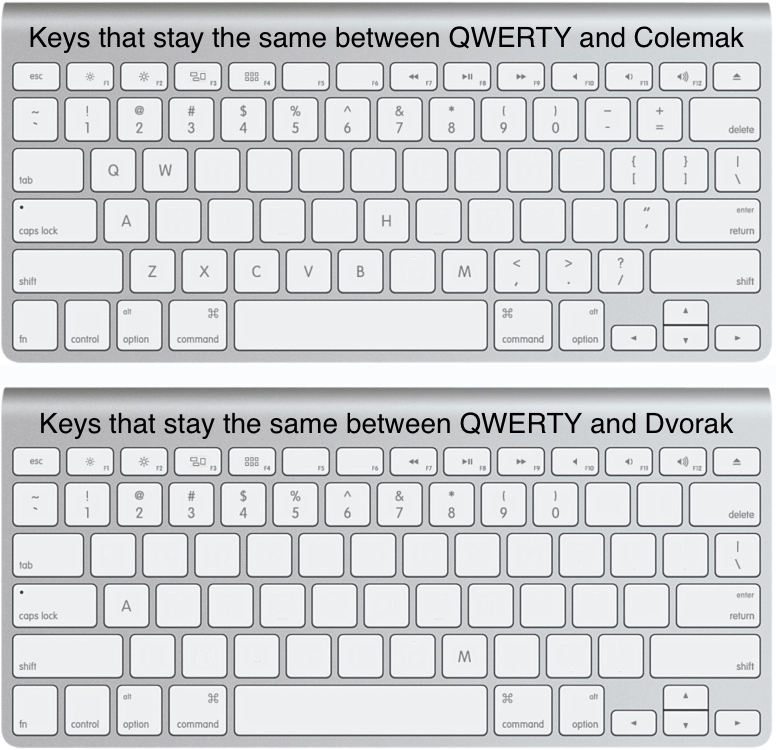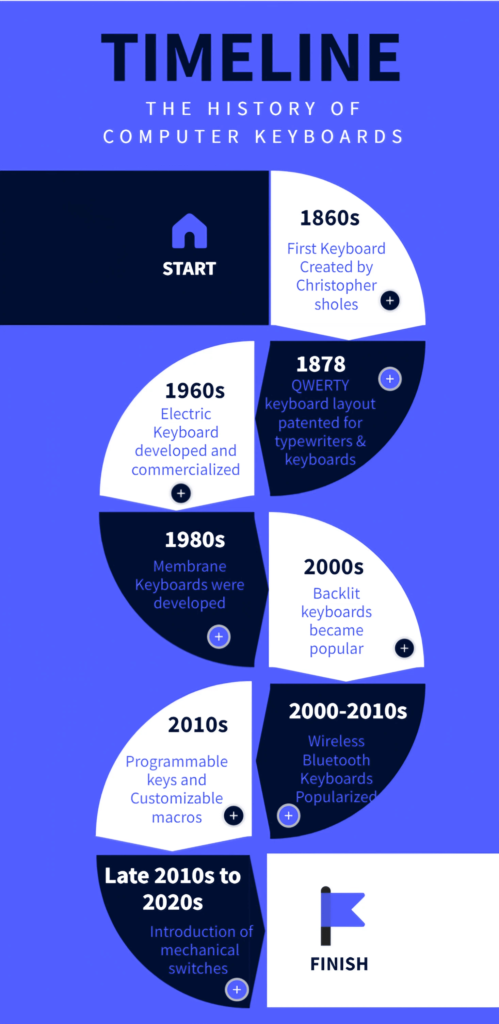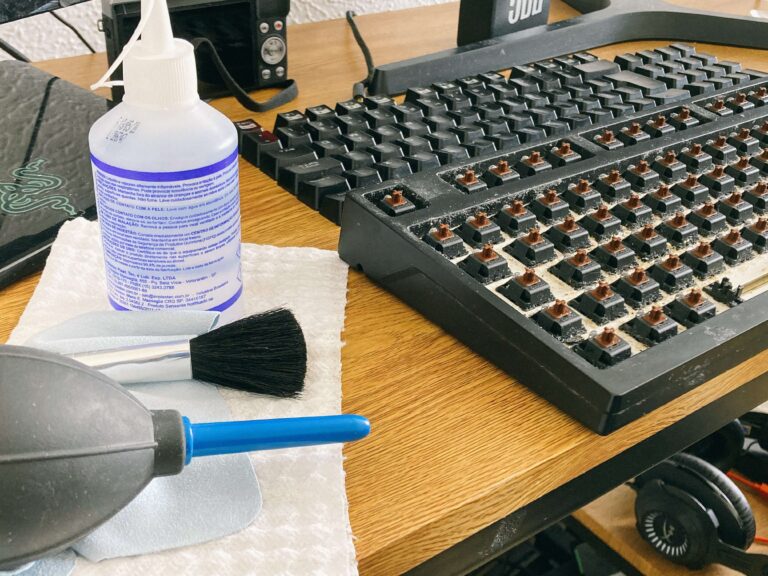In this blog post, we take a look and talk about The Story of Keys That Changed the World. There are a few key facts about the innovations in the history of computer keyboards. This post also includes the evolution of computer keyboard. Pictures and an infographic display the computer keyboard history timeline.
The History of Computer Keyboards
Computer keyboards have come a long way since the first one was invented in the 1860s. Today, they are an essential part of our daily lives, used for everything from typing emails to playing video games. But how did we get here?
The first computer keyboard was invented in 1868 by Christopher Latham Sholes. It was a mechanical keyboard with 26 keys, one for each letter of the alphabet. Sholes’ keyboard was designed for use with a typewriter, and it quickly became the standard keyboard for early computers.
In the 1970s, computer keyboards began to evolve. New keyboards were introduced with features like function keys, cursor keys, and numeric keypads. These new keyboards made it easier to use computers for a variety of tasks.
In the 1980s, the IBM PC was released, and it came with a new keyboard that became the standard for personal computers. This keyboard had 101 keys, including the function keys, cursor keys, and numeric keypad. It also had a space bar that was twice as wide as the space bar on previous keyboards.
In the 1990s, computer keyboards continued to evolve. New keyboards were introduced with features like ergonomic designs, wireless connectivity, and backlit keys. These new keyboards made it more comfortable and convenient to use computers for long periods of time.
Today, there are a wide variety of computer keyboards available on the market. They come in all shapes and sizes, with different features and layouts. There is a keyboard out there for everyone, no matter what their needs are.
Computer keyboards have come a long way since the first one was invented in the 1860s.
Today, they are an essential part of our daily lives, used for everything from typing emails to playing video games. They have evolved over time to become more comfortable, convenient, and efficient. Thanks to the many inventors and innovators who have contributed to their development, computer keyboards are now an indispensable tool for anyone who uses a computer.
In the era of rapid digitalization, we have seen the evolution of numerous technological marvels. Among these, the computer keyboard has been instrumental, in reshaping our lives in ways we could not have imagined.
The Initial Breakthroughs – The History of Computer Keyboards
The inception of computer keyboards dates back to the early 19th century. The typewriter, invented by Christopher Latham Sholes in 1868, is often considered the forerunner of modern computer keyboards. It introduced the QWERTY layout, which we continue to use today.
The Arrival of Digital Keyboards
The keypunch device played a significant role in the shift toward digital keyboards. Used in conjunction with punch card systems like the IBM 026, it was an early precursor to data entry as we know it. By the mid-20th century, keyboards had become integrated parts of computing systems, such as the UNIVAC.
The QWERTY Legacy and the Dvorak Challenge

The QWERTY keyboard, named after its peculiar key arrangement, is the most widespread keyboard design globally. Despite its dominance, alternatives like the Dvorak Simplified Keyboard were proposed. Dvorak claimed superior efficiency, but QWERTY’s deep-rooted presence in industry and education curbed widespread Dvorak adoption.
The Revolution of Personal Computing – Computer Keyboard History

In the 1970s and 80s, the dawn of personal computing triggered a sea change in keyboard designs. IBM’s Model M keyboard, introduced in 1984, established the 101-key layout as the standard. Its tactile feedback and distinctive ‘click’ sound have made it a favorite among keyboard enthusiasts even today.
The Advent of Ergonomic and Compact Keyboards
As computers evolved, so did keyboards. The advent of laptops and mobile computing devices necessitated more compact, ergonomic designs. Apple’s butterfly keyboard and Microsoft’s Natural Keyboard are notable examples. These designs aimed to enhance user comfort and reduce strain during prolonged use.
The Rise of Virtual and Projected Keyboards
The 21st century ushered in the age of virtual and projected keyboards. Virtual keyboards became prevalent with the widespread adoption of touchscreen devices. On the other hand, projected keyboards—using advanced optical technology to detect key presses on any flat surface—expanded the keyboard’s potential beyond physical constraints.
The Future of Keyboards
Looking ahead, keyboards are poised to continue their evolution, embracing advancements in AI, haptics, and augmented reality. The possibilities range from context-aware suggestions to full-blown thought-to-text conversion. Whatever lies ahead, one thing is certain—the keys that changed the world are set to transform it even further.
The history of computer keyboards is a testament to human ingenuity and adaptability. These devices, from their humble typewriter origins to the advanced virtual and projected keyboards, have consistently pushed the boundaries of what is possible in the world of computing.
Evolution of Computer Keyboard
The easiest view of the timeline of the History of Computer Keyboards
More on the History of Computer Keyboards
Find more scholarly information on the history of computer keyboards through this journal on QWERTY and DVORAK keyboards layouts.

Find More Posts on our Blog and Follow our pages on social media:




